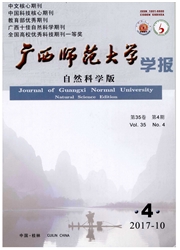

 中文摘要:
中文摘要:
从行为建模思想出发,在Tajima格子气模型基础上,考虑不同空间环境下行人的潜意识行为,建立了具有潜意识效应的人群应急疏散格子气模型,用以刻画行人疏散过程中的偏向选择及决策行为。数值模拟研究了大厅内人群疏散的动力学行为,并探讨了潜意识行为作用空间大小、潜意识行为偏向强度、出口宽度、系统大小及人员密度等因素对人群疏散效率的影响。结果表明:拓展的格子气模型能够真实地再现疏散过程中出现的"成拱"现象;潜意识行为能够有效地提高人群的疏散效率;饱和流量和疏散时间对出口宽度具有确定的标度关系。
 英文摘要:
英文摘要:
Based on the idea of behavioral modeling and Tajima model,an extended lattice gas model is proposed to simulate pedestrian evacuation from a hall by considering the pedestrians' subconscious behaviors under different space environments,which reflect the pedestrians' preferential direction choice and decision behaviors.The pedestrian dynamics and the evacuation efficiency in different scenarios,such as the sizes of space,the preferential direction strengths of subconscious behavior,different widths of exit,system sizes and pedestrian densities are investigated by computer simulation,respectively.The simulation results show that the presented model can capture some essential features of pedestrian evacuation,e.g.,arching phenomenon.Furthermore,the subconscious behavior can effectively improve evacuation efficiency.In addition,the scaling relations of the saturation flow and evacuation time on the width of exit are also obtained.
 同期刊论文项目
同期刊论文项目
 同项目期刊论文
同项目期刊论文
 Subconscious effect on pedestrian counter flow in a modified lattice gas model with the variable tra
Subconscious effect on pedestrian counter flow in a modified lattice gas model with the variable tra 期刊信息
期刊信息
